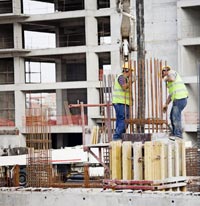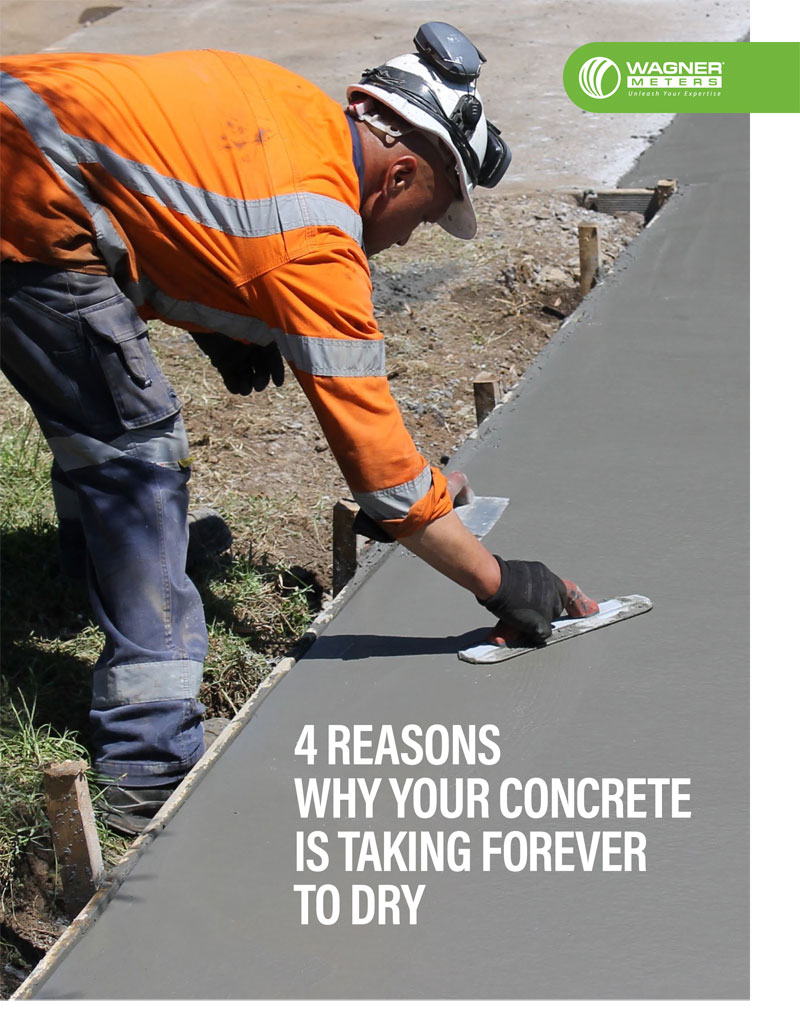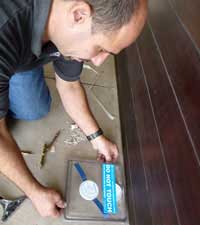What to NEVER Expect on the Job Site

Every construction job site is an exercise in teamwork as each contractor and specialist performs his or her role in the stages of the building project.
Beginning with the designer and architect, each building project is a master plan of schedules, materials, costs, labor, and vision, and each person involved is expected to be a master of the trade with a working knowledge of the requirements of the building’s overall function and purpose.
However, with that many moving parts, there are also some things that inevitably happen. Any tradesman with a history in the business will have encountered unexpected setbacks or obstacles that may or may not be his responsibility, but ultimately affect his own performance.
What is the balance between expectation and reality? There are a few things that it’s probably wise to lower your expectations with, and then either be prepared to allow for, or prepare to be pleasantly surprised. One of the most frequent areas of miscommunication or misunderstanding involves moisture management on the job site.
Why Moisture Management Matters
Moisture-related problems cause billions of dollars in damage each year in the building and construction industry. Every aspect of a building’s structure can be damaged, or even fail completely, as a result of unchecked moisture intrusion.
For roofs and ceilings, moisture can weaken structural supports, damage materials at any layer, reduce insulation values, lead to mold or mildew growth, staining, and health problems for those working in that environment.
 In walls and supports, moisture can travel between levels, causing damage as it travels through wallboards, wooden beams or even vital building systems like wiring or HVAC. In flooring systems, moisture can cause delamination, blistering, buckling, adhesive failure, crowning, cracking, gaps, and more.
In walls and supports, moisture can travel between levels, causing damage as it travels through wallboards, wooden beams or even vital building systems like wiring or HVAC. In flooring systems, moisture can cause delamination, blistering, buckling, adhesive failure, crowning, cracking, gaps, and more.
However, in spite of the potential loss of time, materials and reputation, contractors in a variety of trades still frequently apply outdated testing methods or entirely neglect the best practices of moisture management.
Each contractor, then, must carry the responsibility of knowing her own field and how moisture testing relates to not just her own specialty, but to those systems that she will be in contact with as well.
As an example, a wood flooring specialist has been hired to install a natural wood floor over a concrete subfloor. Obviously, he or she must know the impact moisture will have on the flooring chosen for the job.
He allows adequate acclimation time, monitors ambient conditions, verifies the flooring has reached EMC before installation, applies the specified finish and signs off on the job. A few months down the road, he gets a call saying the floorboards are crowning and the client wants him back to fix it.
What happened?
A number of things are possible, but the most likely one is that the concrete moisture testing was a surface-based test and gave a false positive on the moisture levels of the subfloor. Suddenly, both contractors are involved in a duel over who is responsible for the labor and materials to correct the problem.
What should have happened?
Moisture Measurement in Concrete
In our scenario, the first step should have been to ensure the moisture level in the concrete slab was accurately tested.
You might think, “But it was tested, right?”
Every flooring contractor knows to check for the moisture vapor emissions rate (MVER), but not every contractor understands that the MVER test method is an inherently flawed one because it is based on a misunderstanding of the way moisture moves in a concrete slab.
First Step: Understanding How Concrete Dries
Moisture is a key ingredient in the curing process of concrete. Concrete can’t become concrete without water added, so it is by definition a part of the mix (pun only partly intended). However, that moisture must also leave the concrete for it to set up with maximum strength and durability.
 Concrete dries when the moisture evaporates from the surface of the concrete. As it does, moisture travels through the concrete to the surface by means of small capillaries created between the cement and aggregate mix.
Concrete dries when the moisture evaporates from the surface of the concrete. As it does, moisture travels through the concrete to the surface by means of small capillaries created between the cement and aggregate mix.
This migration to the surface of the slab also means that moisture is not evenly distributed through the slab at this stage – concentrations of moisture will be higher deeper in the slab. This process only stops when the surface of the concrete is sealed. After it is sealed, the remaining moisture will evenly distribute through the slab (a process called equilibration).
Second Step: Understanding How Concrete Is Installed
The same small pathways that allow water vapor to move to the surface also allow moisture to re-enter a slab from other sources. Groundwater, ambient humidity higher than the slab’s internal moisture level, leaking plumbing or appliances – all are potential sources of additional moisture.
For this reason, slabs on grade generally require an installed vapor barrier to prevent below-slab moisture sources from impacting the slab. The concrete is mixed and poured, the surface is leveled and troweled. HVAC systems are running. Then the wait begins for it to dry.
In terms of moisture management, every step of the process has an impact on the moisture content of the slab. The amount of moisture in the initial mix, the ambient conditions of the job site, even troweling practices will impact the drying rate of concrete.
This all adds up to a reality that no rule of thumb will accurately predict a slab’s moisture content. Only accurate testing will give accurate information.

Free Download – 4 Reasons Why Your Concrete Is Taking Forever to Dry
Next Step: Determining How Much Moisture Is Left (Moisture Testing)
Moisture testing for concrete is generally done through a limited number of methods that fall into two categories: surface-based test methods and internal test methods.
Surfaced-based test methods do just that – sit on the surface of the slab with the expectation of determining how much moisture is still leaving the slab.
 Calcium chloride (CaCl) testing is the most common method of surfaced-based moisture testing; others include the hood method, the plastic sheet method, and concrete moisture meters.
Calcium chloride (CaCl) testing is the most common method of surfaced-based moisture testing; others include the hood method, the plastic sheet method, and concrete moisture meters.
The problem, though, is obvious. Because of the way moisture exits and enters a slab, the surface cannot provide any indication of the internal moisture levels. It’s internal moisture that will cause problems once the slab is sealed.
Internal concrete moisture testing is generally known under the name relative humidity (RH) testing or in situ concrete moisture testing. For internal moisture testing, sensors are placed in holes drilled into the concrete slab at a depth scientifically proven to indicate what the final moisture level would be if the slab were sealed at that point in time. This is the information you need to determine if your slab is ready to install flooring systems and meets the manufacturer’s installation specs.
The Rapid RH®: Concrete Moisture Testing You Can Trust
Knowing the challenges that face flooring and concrete professionals, we developed the Rapid RH to provide accurate, field-tested, simple-to-use concrete moisture measurement for concrete and flooring specialists.
Based on years of study in concrete moisture, the award-winning Rapid RH line of products is designed to provide the internal moisture information so critical to flooring and building job success.
Unique in its design, Rapid RH Smart Sensors work with the Total Reader® to provide instant, up-to-date RH test results that don’t require constant re-equilibration and meet all ASTM F2170 requirements for concrete testing.
Combined with the Rapid RH DataMaster™ L6, job site testing is easily recorded and documented for every stage of every project. The Rapid RH line of products provides dependable, accurate, advanced technology that lets you protect your work, your schedule, and your reputation.
So what should you never expect on the job site?
Never expect that the concrete moisture testing specified will provide the information you need to proceed unless you’ve tested with the Rapid RH.
Jason has 20+ years’ experience in sales and sales management in a spectrum of industries and has successfully launched a variety of products to the market, including the original Rapid RH® concrete moisture tests. He currently works with Wagner Meters as our Rapid RH® product sales manager.
Related Posts via Taxonomies
Last updated on June 8th, 2021




How about a video on the differences between drills, hammer drills, SDS hammer, SDS+ hammer, SDS Max hammer? Also all the different torque settings etc… I know for me took a long time to learn that.
Evan:
Thanks for the video idea. I will add it to the list.
Thanks,
Jason